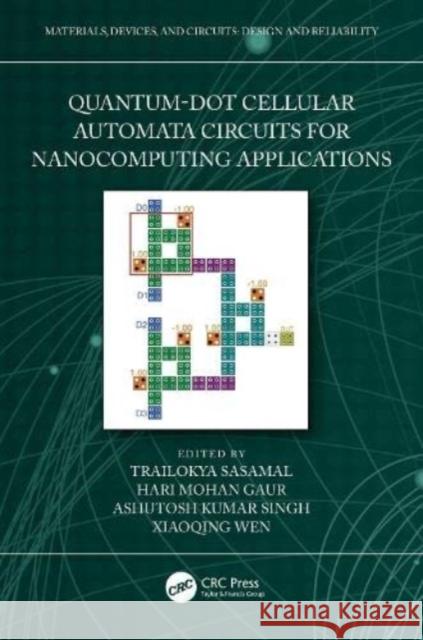Quantum-Dot Cellular Automata Circuits for Nanocomputing Applications » książka
Quantum-Dot Cellular Automata Circuits for Nanocomputing Applications
ISBN-13: 9781032420189 / Angielski
This book provides a composite solution for optimal logic designs for quantum-dot cellular automata based circuits. It includes the basics of new logic functions and novel digital circuit designs, quantum computing with QCA, new trends in quantum and quantum-inspired algorithms and applications, and algorithms to support QCA designers. Futuristic Developments in Quantum-Dot Cellular Automata Circuits for Nanocomputing includes QCA-based new nanoelectronics architectures that help in improving the logic computation and information flow at physical implementation level. The book discusses design methodologies to obtain an optimal layout for some of the basic logic circuits considering key metrics such as wire delays, cell counts, and circuit area that help in improving the logic computation and information flow at physical implementation level. Examines several challenges toward QCA technology like clocking mechanism, floorplan which would facilitate manufacturability, Electronic Design Automation (EDA) tools for design and fabrication like simulation, synthesis, testing etc. The book is intended for students and researchers in electronics and computer disciplines who are interested in this rapidly changing field under the umbrella of courses such as emerging Nano-technologies and its architecture, low-power digital design. The work will also help the manufacturing companies/industry professionals, in nanotechnology and semiconductor engineers in the development of low power quantum computers.
This book provides a composite solution for optimal logic designs for quantum-dot cellular automata based circuits. It includes the basics of new logic functions and novel digital circuit designs, quantum computing with QCA, new trends in quantum and quantum-inspired algorithms and applications, and algorithms to support QCA designers.
Futuristic Developments in Quantum-Dot Cellular Automata Circuits for Nanocomputing includes QCA-based new nanoelectronics architectures that help in improving the logic computation and information flow at physical implementation level. The book discusses design methodologies to obtain an optimal layout for some of the basic logic circuits considering key metrics such as wire delays, cell counts, and circuit area that help in improving the logic computation and information flow at physical implementation level. Examines several challenges toward QCA technology like clocking mechanism, floorplan which would facilitate manufacturability, Electronic Design Automation (EDA) tools for design and fabrication like simulation, synthesis, testing etc.
The book is intended for students and researchers in electronics and computer disciplines who are interested in this rapidly changing field under the umbrella of courses such as emerging Nano-technologies and its architecture, low-power digital design. The work will also help the manufacturing companies/industry professionals, in nanotechnology and semiconductor engineers in the development of low power quantum computers.











